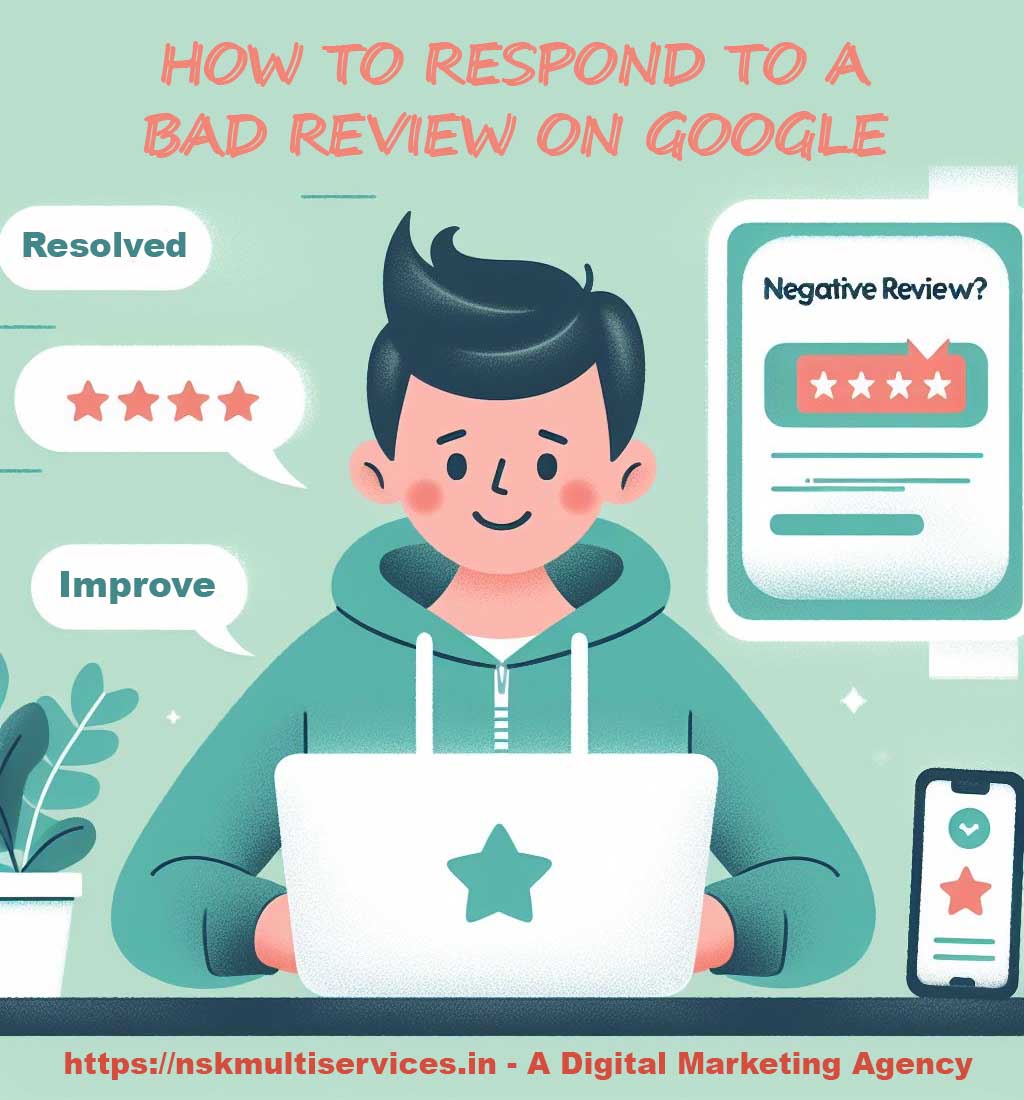Online reviews wield significant influence over consumer decisions. While positive reviews can boost a business’s reputation and attract new customers, negative reviews have the potential to tarnish brand image and deter potential buyers. However, negative feedback doesn’t have to spell disaster. With the right strategies and approach, businesses can effectively manage negative reviews to protect their reputation and even turn dissatisfied customers into brand advocates. In this in-depth guide, we’ll see actionable steps and best practices for handling negative reviews/feedbacks, empowering businesses to navigate the complexities of online feedback with confidence and poise.
1) Understanding the Impact of Negative Reviews
1.1) The Power of Online Reviews
Online reviews reign supreme as a driving force behind consumer behavior and purchasing decisions. With consumers increasingly turning to the internet to research products and services before making a purchase, the influence of online reviews cannot be overstated. Studies have shown that a significant majority of consumers trust online reviews as much as personal recommendations from friends or family. These reviews serve as social proof, providing valuable insights into the quality, reliability, and credibility of businesses.
Negative reviews, in particular, carry substantial weight in shaping consumer perceptions. Research indicates that a single negative review can deter potential customers, with nearly 90% of consumers admitting that they are influenced by negative reviews when making purchasing decisions. Moreover, negative reviews can spread quickly across online platforms, amplifying their impact and potentially damaging a business’s reputation.
1.2) Why Negative Reviews Matter
Online reputation management, negative reviews are not to be taken lightly. Ignoring negative feedback or neglecting to address it promptly can have far-reaching consequences for businesses. Negative reviews left unchecked can erode trust and credibility, leading to a loss of customers and revenue. In fact, studies have shown that businesses risk losing up to 70% of potential customers if they have four or more negative reviews.
Addressing negative reviews in a timely and effective manner is paramount to mitigating their impact and preserving brand reputation. By acknowledging and responding to negative feedback promptly, businesses demonstrate accountability, transparency, and a commitment to customer satisfaction. Failure to address negative reviews can signal indifference or incompetence, further alienating dissatisfied customers and deterring potential prospects. Therefore, proactive management of negative reviews is essential for safeguarding brand reputation and fostering positive customer experiences.
2) Best Practices for Managing Negative Reviews
Effectively handling negative reviews is paramount to safeguarding your brand’s image and fostering customer trust. By implementing best practices for responding to negative feedback, businesses can demonstrate their commitment to customer satisfaction and turn potentially damaging situations into opportunities for growth and improvement.
2.1) Monitor Review Platforms
Staying informed about customer feedback is important for maintaining a positive online reputation. Regularly monitoring review platforms and social media channels allows businesses to promptly address any negative reviews that may arise. By actively engaging with customer feedback, businesses can demonstrate responsiveness and a genuine interest in addressing customer concerns.
To ensure timely awareness of new reviews, it’s essential to set up alerts and notifications across various review platforms. By leveraging tools and features offered by review platforms, businesses can receive real-time notifications whenever a new review is posted. This proactive approach enables businesses to promptly assess and respond to negative feedback, minimizing the impact on their brand reputation.
2.2) Respond Promptly and Professionally: Addressing Negative Feedback with Care
In the face of negative reviews, responding promptly and professionally is key to mitigating potential damage to your brand’s reputation. Timely responses demonstrate attentiveness and a commitment to addressing customer concerns, thereby fostering trust and confidence among current and potential customers.
When crafting responses to negative reviews, it’s essential to approach the situation with empathy and understanding. Acknowledge the reviewer’s concerns and express genuine regret for any negative experiences they may have encountered. By demonstrating empathy and a willingness to listen, businesses can de-escalate tensions and work towards finding a resolution.
2.3) Take the Conversation Offline
In instances where negative feedback involves complex issues or sensitive matters, it’s advisable to take the conversation offline for further resolution. Providing contact information or alternative channels for dissatisfied customers to reach out privately allows businesses to address concerns in a more personalized and effective manner.
By moving the conversation offline, businesses can engage with customers one-on-one to understand their specific concerns and offer tailored solutions. This approach not only demonstrates a commitment to resolving customer issues but also protects customer privacy and confidentiality.
2.4 Offer Solutions and Apologies
When addressing negative reviews, it’s important to offer genuine solutions or remedies to address the reviewer’s concerns. By acknowledging the validity of the customer’s feedback and offering meaningful solutions, businesses can demonstrate a proactive approach to customer service and showcase their dedication to customer satisfaction.
In addition to offering solutions, it’s crucial to extend a sincere apology for any negative experiences the customer may have encountered. A genuine apology demonstrates accountability and empathy, helping to rebuild trust and restore the customer’s confidence in the brand.
2.5) Stay Transparent and Authentic
Transparency and authenticity are fundamental principles in effectively managing negative reviews. When responding to negative feedback, businesses should strive to provide honest explanations or insights into the situation, avoiding canned responses or generic replies.
By offering transparent and authentic responses, businesses can build trust and credibility with customers, demonstrating a genuine commitment to addressing feedback and improving the overall customer experience. Authenticity breeds trust, and by maintaining transparency in all interactions, businesses can strengthen their relationships with customers and bolster their brand reputation.
Further reads: How do I Correct my Location on Google Maps
3) Turning Negative Feedback into Opportunities
Turning adverse situations into opportunities for growth and improvement is key. Negative feedback, while initially daunting, can serve as a valuable source of insights and catalyst for positive change. Let’s see how businesses can leverage negative reviews to their advantage and transform them into opportunities for enhancement and customer satisfaction.
3.1) Learn from Feedback
Negative reviews, despite their unfavorable nature, offer a silver lining: they provide businesses with invaluable feedback that can drive improvement and innovation. Instead of viewing negative feedback as a setback, businesses should see it as an opportunity for introspection and growth.
In the context of our focus on “How to respond to a bad review on Google?”, understanding the value of negative feedback is paramount. By recognizing that every criticism contains seeds of opportunity, businesses can shift their perspective and approach negative reviews with a constructive mindset.
One way to harness the value of negative feedback is by closely examining the underlying reasons behind the criticism. Whether it’s dissatisfaction with product quality, poor customer service, or issues with delivery, negative reviews often pinpoint areas where businesses can refine their offerings and processes.
3.2) Implement Changes and Solutions
Once businesses have identified areas for improvement through negative reviews, the next step is to implement meaningful changes and solutions. In the context of our title “How to deal with negative google reviews?”, this section emphasizes the proactive steps businesses can take to address customer concerns and enhance their overall experience.
Outline steps for implementing changes or solutions based on feedback received from negative reviews.
Here, businesses should prioritize transparency and communication, acknowledging the feedback received and detailing the steps being taken to address it. By demonstrating a commitment to addressing customer concerns, businesses can foster trust and loyalty, even amidst adversity.
Moreover, it’s essential for businesses to adopt a mindset of continuous improvement and adaptation. Customer expectations are constantly evolving, and businesses must be agile in responding to changing needs and preferences. By viewing negative feedback as a catalyst for growth, businesses can stay ahead of the curve and maintain a competitive edge in the market.
3.3) Showcase Positive Responses
In the context of our focus on “How to manage negative reviews?”, showcasing positive responses to negative feedback is a powerful way to illustrate the effectiveness of a proactive approach to customer satisfaction.
Share success stories or examples of how businesses have effectively addressed negative feedback and turned it into a positive outcome.
By highlighting instances where businesses have successfully resolved customer concerns and exceeded expectations, businesses can inspire confidence and instill trust in their brand. These success stories serve as testimonials to the power of genuine efforts to address customer grievances and foster meaningful connections with the audience.
Ultimately, by embracing negative feedback as an opportunity for improvement, implementing proactive solutions, and showcasing positive outcomes, businesses can not only manage negative reviews effectively but also emerge stronger and more resilient in the eyes of their customers.
Also read: The Comprehensive Google Ads optimization checklist boost your campaigns
4) Proactive Reputation Management Strategies
4.1 Encourage Positive Reviews
In the realm of reputation management, fostering positive reviews can serve as a potent antidote to negative feedback. By encouraging satisfied customers to share their positive experiences, businesses can bolster their online reputation and counteract the impact of unfavorable reviews. Here are some effective strategies for cultivating a culture of positivity:
4.1.1 Implement a Review Generation Strategy:
To kickstart the process of generating positive reviews, businesses can implement a structured approach to soliciting feedback from satisfied customers. This may involve sending follow-up emails or messages post-purchase, kindly requesting customers to leave a review about their experience. By making the feedback process seamless and convenient, businesses can increase the likelihood of receiving positive reviews.
4.1.2 Offer Incentives or Rewards:
To incentivize participation in the review process, businesses can consider offering rewards or incentives to customers who take the time to leave feedback. This could range from discounts on future purchases to entry into a prize draw. By adding a tangible benefit for leaving a review, businesses can motivate customers to share their positive experiences and contribute to building a favorable online reputation.
4.1.3 Showcase Positive Reviews:
Once positive reviews start rolling in, it’s essential to showcase them prominently on relevant platforms such as the company website or social media profiles. By highlighting positive feedback from satisfied customers, businesses can demonstrate their commitment to excellence and build trust with potential buyers. Additionally, showcasing positive reviews can help counterbalance the impact of negative feedback, providing a more balanced perspective for prospective customers.
4.2 Build a Strong Online Presence
Maintaining a robust online presence is paramount for businesses looking to manage their reputation effectively. By actively engaging with audiences across various platforms, businesses can shape their digital identity and foster positive relationships with customers. Here are some strategies for building and maintaining a strong online presence:
4.2.1 Create Valuable Content
One of the most effective ways to engage with audiences and build a loyal following is by consistently creating valuable content. Whether it’s blog posts, videos, infographics, or social media updates, businesses should strive to provide content that educates, entertains, or inspires their target audience. By offering valuable insights, tips, or entertainment, businesses can position themselves as industry experts and attract a loyal following of engaged customers.
4.2.2 Engage with Audiences
In addition to creating content, businesses should actively engage with their audience across various online platforms. This may involve responding to comments on social media posts, participating in online discussions, or hosting live Q&A sessions. By fostering two-way communication with their audience, businesses can demonstrate authenticity, build trust, and strengthen their connection with customers.
4.2.3 Foster Positive Relationships
Building strong relationships with customers is crucial for maintaining a positive online reputation. Businesses should prioritize customer satisfaction and go above and beyond to exceed expectations. Whether it’s offering personalized recommendations, resolving issues promptly, or expressing gratitude for customer loyalty, businesses can cultivate positive relationships that translate into glowing reviews and recommendations.
4.3 Monitor Brand Mentions
In the age of social media and online forums, brand mentions can occur anywhere and at any time. To safeguard their reputation and address any negative sentiment promptly, businesses must proactively monitor brand mentions across various online channels. Here’s how businesses can effectively monitor brand mentions and sentiment:
4.3.1 Utilize Social Listening Tools
Social listening tools enable businesses to monitor conversations and mentions of their brand across social media platforms, forums, blogs, and news sites. By setting up alerts and notifications, businesses can stay informed in real-time about any mentions of their brand, allowing them to respond promptly to both positive and negative feedback.
4.3.2 Respond Promptly to Negative Mentions
In the event of negative brand mentions or sentiment, businesses should prioritize addressing the issue promptly and professionally. Whether it’s a customer complaint on social media or a negative review on a review site, businesses should acknowledge the concern, apologize if necessary, and offer a resolution. By demonstrating responsiveness and a commitment to customer satisfaction, businesses can mitigate the impact of negative sentiment and preserve their reputation.
By implementing these proactive reputation management strategies, businesses can effectively manage negative reviews and safeguard their online reputation. From encouraging positive feedback to building a strong online presence and monitoring brand mentions, businesses can take proactive steps to shape a positive perception of their brand and foster trust and loyalty with customers.
Wrapping Up
Effective management of negative reviews is a crucial aspect of maintaining a positive online reputation and building trust with customers. By understanding the impact of negative feedback, adopting best practices for responding to reviews, and leveraging opportunities for improvement, businesses can turn adverse situations into opportunities for growth and customer loyalty. With proactive reputation management strategies in place, businesses can navigate the complexities of online feedback with confidence and resilience, ultimately enhancing their brand reputation and fostering long-term success.




